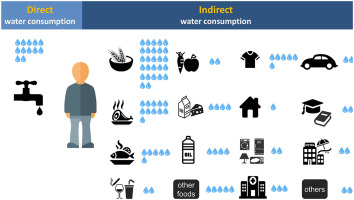Journal of Cleaner Production ( IF 11.1 ) Pub Date : 2020-03-27 , DOI: 10.1016/j.jclepro.2020.121321 Li Chai , Zixuan Han , Yi Liang , Yuqi Su , Guanhua Huang

|
Household sector is the end consumer in the socio-economic water cycle and consumes a large amount of water in both physical and virtual ways. The life cycle water consumption by households, also denoted as Blue Water Footprint (BWF), is mostly affected by consumption expenditure and varies among different household groups. This study assessed the household BWF in China by integrating the input-output model with a national survey of household consumption expenditure. The logarithmic mean divisia index method was employed to examine the influencing factors in BWF disparity among the different household groups. We found that 1) per capita BWF, on national average, increased from 157 m3 in 2012 to 176 m3 in 2018; 2) in 2012, urban households, on average, consumed 185 m3 of water per capita annually, while rural households consumed 126 m3 per capita; there is a significant difference in dietary between rural and urban households, e.g., starchy foods predominate in rural dietary while animal-based foods are more preferred in urban regions; 3) BWF shows distinctive regional characteristics, e.g., more water was consumed on clothes in cold regions and on aquatic products in coastal regions; 4) income disparity is a key factor in causing the BWF difference. Although BWF has a positive correlation with income, its marginal growth diminishes, because of the fading consumption propensity and the switch of consumption pattern from water-consuming to water-saving, e.g., rich households are inclined to spend most of the money on education and recreation rather than food. This study is of significance in understanding how the BWF varies among different households, and how the BWF is affected by the influencing factors, including income, propensity to consume, consumption pattern, and virtual water intensity.



























 京公网安备 11010802027423号
京公网安备 11010802027423号